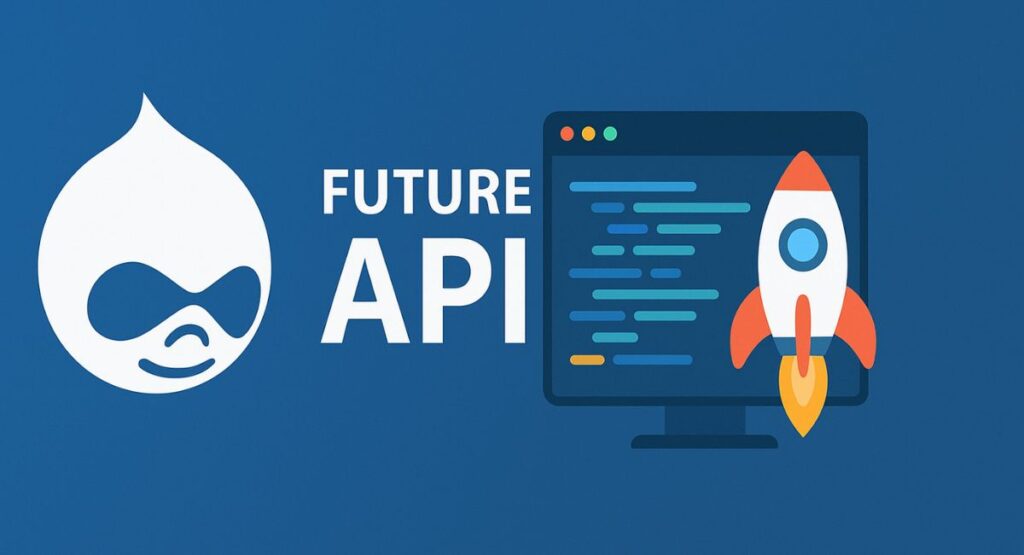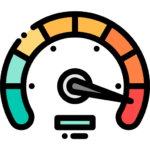Future-Proof Your Website with Drupal API in 2025

Table of Contents
Introduction:
The web in 2025 expects content everywhere: mobile apps, PWAs, voice assistants, kiosks, and multiple frontends that all want the same canonical content.
An API-first Drupal approach — using Drupal JSON:API, GraphQL, and secure auth — lets you publish once and deliver everywhere. Below is a clear, practical guide that explains what to use, when to use it, and how to secure, scale, and govern your Drupal APIs so your website stays future-proof.
With expert Drupal development services, you can streamline integrations, optimize performance, and build digital experiences that adapt to modern business needs
Why choose an API-first Drupal in 2025
API-first Drupal means treating content as reusable data served over standard APIs instead of being tightly coupled to one HTML frontend. Benefits are immediate: faster time-to-market for new channels, easier integration with modern stacks (Next.js, React Native, SvelteKit), and better separation between content teams and frontend engineers. This approach supports omnichannel content delivery, personalization, and component-based frontends — all trends driving digital experiences today.
What “Drupal API” looks like today: JSON: API, REST, GraphQL & custom endpoints
- JSON: API (in core) — Drupal ships a JSON: API implementation in core that exposes entity-based endpoints out of the box. It’s zero-config for basic CRUD and follows the JSON: API spec, making decoupled builds faster to start.
- GraphQL (contrib) — The Drupal GraphQL module provides a schema and tools for precise queries. Use GraphQL when clients need to fetch only specific fields or when you want a single, flexible endpoint for many clients. The GraphQL contrib ecosystem continues to evolve with composer-friendly modules and tooling.
- REST & custom endpoints — REST still has its place for legacy integrations or very specific workflows. For custom business logic, write custom endpoints or controllers in a tiny custom module.
Deciding which one to use depends on project needs — JSON: API for rapid entity-driven APIs, GraphQL for client-driven data fetching, and custom endpoints for bespoke behavior.
2025 trends to plan for (short, actionable list)
- Headless & hybrid adoption — More projects are adopting partial decoupling: editors keep Drupal’s authoring UX while frontends are built with modern frameworks. This hybrid approach balances editorial needs with frontend performance.
- Stronger JSON: API tooling — Modules like JSON: API Include and ecosystem plugins help tailor payloads and reduce overfetching.
- GraphQL ecosystem growth — Improvements and new contrib modules make it easier to expose configuration and custom schemas without heavy custom code.
- Security-first auth — OAuth2 / OpenID Connect implementations (Simple OAuth, OIDC) are standard for API access and SSO flows. Plan auth early.
- Business drivers — Enterprises are building composable DX platforms; API investments save cost long-term by enabling reuse across channels.
Choosing the right API approach — quick decision checklist
Ask these questions:
- Do I need to support many different frontends (mobile, web, kiosks)? → Yes → favor JSON: API or GraphQL.
- Do editors need WYSIWYG & native Drupal workflows? → Yes → consider hybrid/partial decoupling so editors keep Drupal UX.
- Do clients need very specific, tiny payloads to save mobile bandwidth? → Yes → GraphQL can reduce overfetching.
- Are you integrating with legacy systems that expect REST? → Use custom REST endpoints or compatibility layers.
API design & architecture essentials
- Content modelling: design entity types and field relationships with APIs in mind. Avoid deeply nested references unless necessary. Use view modes and JSON: API field selection to control payloads.
- Versioning strategy: prefer backward-compatible changes, use header or accept-version strategies when possible, and reserve URI versioning for breaking changes.
- Caching: apply CDN and edge caching, use cache tags with Drupal to purge intelligently, and leverage sparse fieldsets and include parameters to reduce payload size (JSON:API features).
- API gateways & rate limits: use gateways when you need centralized auth, rate limiting, and monitoring.
Security & authentication
- OAuth2 / OpenID Connect: implement OAuth flows for apps and service tokens for machine-to-machine calls (Simple OAuth or OIDC contrib modules). Rotate keys, use scopes, and log access.
- TLS everywhere: force HTTPS, HSTS, and secure cookies.
- Least privilege & scopes: give tokens minimal access.
- Audit & monitoring: log failed auth attempts, monitor unusual patterns, and test endpoints for injection/serialization issues.
Developer experience: docs, testing & CI
- Auto-generate docs: expose OpenAPI/Swagger for REST-style endpoints and maintain GraphiQL for GraphQL exploration.
- Contract tests: add schema checks and contract tests in CI to prevent breaking frontend builds.
- Postman & mock servers: distribute Postman collections or mock servers for frontend teams to work in parallel.
- Developer tooling: use linting for JSON responses, unit tests for custom endpoints, and static analysis for schema drift.
Performance & scale
- Use sparse fieldsets and includes to minimize payload. For JSON: API, leverage fields[] and include parameters.
- Cache aggressively at the CDN or edge; use cache tags to purge content selectively.
- Pre-render critical pages or use ISR/SSG (Incremental Static Regeneration) with Next.js for public pages and reserve APIs for dynamic interactions.
Integrations & real-world use cases
- Next.js + Drupal JSON:API: a common pairing for blazing-fast marketing sites with server-side rendering and great SEO.
- Mobile apps: use GraphQL or targeted JSON: API endpoints to serve compact payloads for low-bandwidth clients.
- E-commerce headless: combine Drupal for content + a headless commerce system; use APIs for product lists, recommendations, and carts.
- Personalization & analytics: stream events from frontends into analytics and personalization engines via middleware that consumes Drupal APIs.
Migration & rollout checklist
- Audit current endpoints — list all public and internal consumers.
- Enable JSON: API in a staging environment and test endpoints.
- Implement auth (Simple OAuth / OIDC) and validate token workflows.
- Add docs and Postman collections, then run contract tests in CI.
- Canary rollout and monitor latency, error rate, and cache hit ratio.
Monitoring & observability
Track these metrics:
- Endpoint latency and error rate
- Traffic by endpoint and token/client
- Payload sizes and bandwidth usage
- Cache hit/miss ratio
Use APM tools, Prometheus + Grafana, or cloud provider monitoring to alert on anomalies.
Governance, teams & cost
- Decide ownership: the platform team typically owns API contracts and stability; feature teams implement endpoints within that contract.
- Governance: use deprecation policies, a changelog, and API docs versioning.
- Cost: API traffic and CDN costs can scale; design payloads carefully and use caching to control bills.
Concrete next steps (quick checklist to future-proof today)
- Enable JSON: API in dev/staging and confirm endpoints.
- Add Simple OAuth / OIDC for secure token access.
- Decide where GraphQL makes sense (mobile apps, complex UIs) and prototype.
- Add docs (OpenAPI/GraphiQL), CI contract tests, and an API monitoring dashboard.
- Create a migration & versioning policy and publish it to consumers.
Resources & further reading
- Drupal.org — JSON: API module docs.
- Drupal.org — GraphQL project page.
- Simple OAuth & OIDC modules on Drupal.org.
- Industry trend reports on headless CMS and API-first architectures.
Conclusion
Write this article as a practical, hands-on guide with code snippets (example JSON: API call, example GraphQL query), a downloadable “Drupal API migration checklist”, and a short architecture diagram that compares monolith vs hybrid vs fully headless. Those assets make the piece more linkable and highly shareable with engineering and marketing teams alike.












